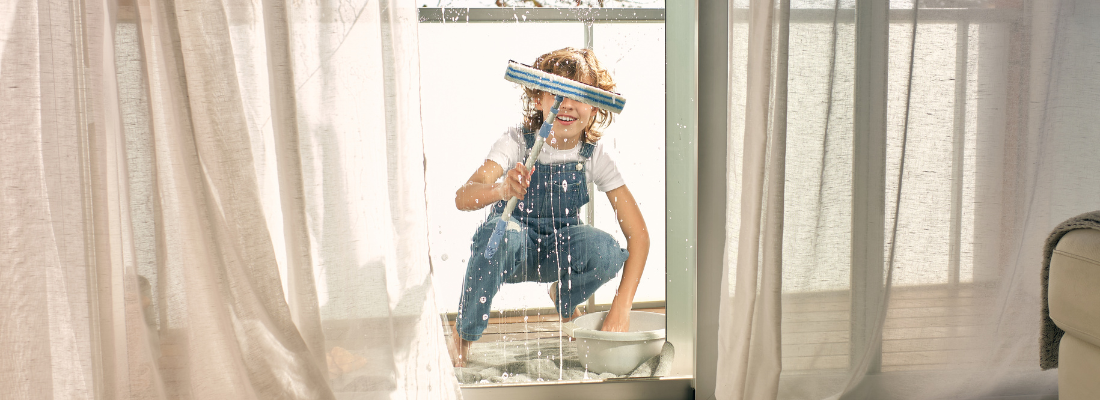What is ergonomics and how does it reduce absenteeism?
It is sometimes difficult to determine where the absenteeism within your company comes from. Absenteeism due to illness can have various causes, physical complaints or mental complaints. The environment in which your employees work determines how they feel and perform.
That is why it is important to listen to your employees and create a safe and healthy working environment. High absenteeism leads to increasing costs. So when there are complaints with your employees, listen to these problems. However, it’s better to not make it that far and try to act on it preventively. Prevention is still better than cure. It is therefore good to see how you can integrate ergonomic working into your working environment.
What is ergonomics?
Ergonomics is adapting the environment to people. This can be a product, space or workplace. Ergonomics is part of our daily life, but is mainly known in work situations. After all, it is derived from the Greek words "ergon" (work) and "nomos" (law). Ergonomics stands for healthy and efficient working. User-friendliness and comfort are particularly important in the design.
Why is ergonomics important?
We often mistakenly think that ergonomics is something new, but the concept dates back to the last century. The history of ergonomics and the associated science arose from two waves in history. The first wave was during the industrial revolution and with it the rise of mass production. Innovation of a product was always applied to the average size of man. What was appropriate was not taken into account. The second wave came after the Second World War. Many accidents occurred during this period due to operating errors between man and system. The system could do a lot, but man's inexperience with these new products (system) was the limiting factor. Continuously improving and adjusting this interaction was crucial to achieve the ultimate cooperation between new products, systems and people.
In the present time an employee has to work according to the Working Conditions Act, "employees must be able to work safely and healthily". This contains requirements that a workplace must meet, for example that as many risks as possible must be tackled at the source for the health of employees. It is best to prevent the complaints and act preventively. Proactive versus reactive. Remember that every employee is an individual and flexible working is becoming increasingly important, which is why it is all the more important for his work material. If these can be set correctly, the smaller the chance of any complaints.
Ergonomics can be split into two forms: cognitive and physical ergonomics. Cognitive ergonomics includes the mental processes (perception, thinking and manner of movement) in the interaction between man and system. An example is the use of a mobile phone. The first phones had limited functionalities. Calling, simple games and texting were actually the things we could do with a mobile phone. But now, 20 years later, it is a mini computer with endless possibilities. The technology has now significantly improved and with it the ease of use between people and the system (the mobile phone or smartphone). Purpose: to relieve the user, which makes us increasingly dependent on the system.
In addition to cognitive ergonomics, we also have physical ergonomics. In this we talk about the physical activity of employees in relation to his environment. It is about the physical movements that we perform when using products. That could be the seat in the car, cycling to work and a desk when working. But there is no standard situation. Every person is different and needs adjustments to these products in order to use it properly. Your car seat must be adjusted so that you can easily reach the pedals. A desk and monitor must be at the correct height so that you do not get any physical complaints. And the bicycle, you have to be able to reach the pedals.
How does ergonomics relate to cleaning?
Carrying out cleaning work is physically demanding and cost a lot of energy. Your employees probably need to lift & carry and push & pull regularly. Various body parts are therefore used intensively and are therefore at risk of various physical complaints. It is very important for both the employer and the employee that the work can be done as safely and healthily as possible. This prevents absenteeism and absence. Naturally, a good and healthy working environment and ergonomic auxiliary materials contribute to a more pleasant working climate, which ultimately leads to a safer and better product, or a better quality service. The beginnings and course of these ailments will be different for everyone. To recognise these stages of complaints, is described under the term RSI.
RSI stands for Repetitive Strain Injury and is actually a collective name for injuries due to repeated stress. These often form in the wrists, arms, neck, shoulders and hands. Repeated repetition of a certain muscle tension ensures that the muscle can no longer relax. As a result, the muscle is constantly in a certain tension and the pain will worsen if the employee does nothing about it. Solutions can be to change the workplace, to move a certain exercise repeatedly or to strengthen the muscles, for example. Solving is necessary, preventing these complaints is even better.
Working ergonomically, a solution for persistent physical complaints
You cannot determine how your employees deal with their complaints. You can, however, ensure that the complaints do not arise (preventively), reduce or decrease completely. You can work with your employee to see what the complaints are and what he needs to recover from them. To prevent preventive complaints, you can carefully examine the workplaces, posture and conditions.
Ergonomic cleaning by proper lifting and carrying
The maximum lifting weight when working ergonomically in cleaning is 25 kg in the most ideal situation. It is best to do this as close to the body as possible (just in front of the abdomen). Of course this is not possible with some objects and 25kg is generally too heavy a load. If you have to lift regularly, a limit of 15kg is a more realistic goal.
Arm hand load in the cleaning
The hands are one of the most commonly used tools in cleaning, of course it is very important that you also work ergonomically during cleaning. It is often the case that the hand and arm make a repetitive movement. It is important that with 1 hand no more than 1 kg of force is applied. In addition, the wrist is one of the most heavily loaded body parts in conventional cleaning work (just think of rubbing the cloth). In this case too, we recommend switching to the use of microfibre cloths. As a result, your employees no longer have to wring out the cloths, which saves them a very heavy physical load, and you also work more hygienically with microfibre than with the conventional method.
Of course, there are nowadays a lot of auxiliary materials that support your employees in the field of ergonomic cleaning. Think for example of handles that are adjustable in height so that everyone can adjust them to their height. Nowadays, the use of work trolleys and cleaning trolleys is an indispensable part of a well-organised cleaning company, which means that your staff has less to lift and carry. Brushes, sweepers and handles are now all developed in such a way that they have ergonomic handles so that they lie perfectly in the hand. In the field of ergonomic working, there are endless tools available today. We would like to make you aware of the fact that ergonomic working in cleaning is not an obstacle but rather an opportunity to create a pleasant working atmosphere and a reduction in your absenteeism.
5 tips on how to work ergonomically
1. Watch out for physical overload
- Maximum weight that can be lifted is approximately 25kg;
- Objects to be pushed or pulled should not be too heavy;
- If the object has wheels, they must run smoothly;
- No more than 1 kg of force should be applied with one hand;
- Kneeling and squatting should be limited as much as possible;
- Frequent rotation of the trunk and lifting the arms must be prevented.
2. Use devices and resources as they should
The suction tube of the vacuum cleaner should be adjusted to the shoulder height of the cleaner.
Those who work with large, heavy devices such as scrubbers or vacuum cleaners know that an incorrect ergonomic posture can lead to back pain and other complaints. Therefore, make sure that you use devices according to the ergonomic criteria that apply to the specific machine. An example: the suction tube of the vacuum cleaner as an example. It must be adjusted to the shoulder height of the cleaner.
When it comes to the use of cleaning products, it is good to first read the safety data sheet. There, suppliers are obliged to state all properties and possible risks of dangerous substances. If you want to be sure that the available information is correct and complete, you can do the VIB check.
3. Use the GEIS method
The GEIS method shows which protective measures are required to perform safe cleaning work.
A safe workplace is a right that every employee has, which is stated, among other things, in the Working Conditions Act. The employer is therefore responsible for arranging any protective equipment when working with hazardous cleaning materials. Which resources are needed can be found out via the so-called GEIS method. This Generic Exposure Information Sheet created by manufacturers, describes what it takes to work safely with their product. Handy to consult one if you think you can do better.
4. Get a diploma
As an employee you also have your own responsibility to limit the risks of the work as much as possible. It is therefore good to be educated. If necessary, discuss this with your manager.
5. Keep up with the latest innovations
The cleaning industry is on the move, that much may be clear. Driven by the opportunities that new technologies bring; great things are already happening in the industry. It is important to stay up-to-date on new ways to improve the work environment for your employees. The Interclean newsletter will inform you about what is happening in the industry.
Share your stories with us!
Do you have an innovation or interesting news you would like to share with the professional cleaning and hygiene industry? The Interclean website and social media channels are a great platform to showcase your stories!
Please contact our press department interclean@rai.nl.
Are you an Interclean exhibitor?
Make sure you add your latest press releases to your Company Profile in the Exhibitor Portal for free exposure.
Receive the best newsletter on cleaning & hygiene - straight to your inbox!
We promise never to send you spam and you can unsubscribe at any time!





